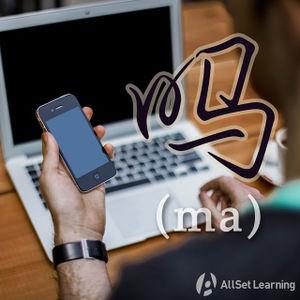Difference between revisions of "Questions with "le ma""
| Line 42: | Line 42: | ||
* 北京 你 去 <em>了 吗</em>?<span class="trans">Did you go to Beijing?</span> | * 北京 你 去 <em>了 吗</em>?<span class="trans">Did you go to Beijing?</span> | ||
| − | * 晚饭 你 吃 <em>了 吗</em>?<span class="trans">Did you eat | + | * 晚饭 你 吃 <em>了 吗</em>?<span class="trans">Did you eat dinner?</span> |
| − | * 电影 你 看 <em>了 吗</em>?<span class="trans">Did you | + | * 电影 你 看 <em>了 吗</em>?<span class="trans">Did you watch the movie?</span> |
* 作业 你 写 <em>了 吗</em>?<span class="trans">Did you do homework?</span> | * 作业 你 写 <em>了 吗</em>?<span class="trans">Did you do homework?</span> | ||
* 这 本 书 你 读 <em>了 吗</em>?<span class="trans">Did you read this book?</span> | * 这 本 书 你 读 <em>了 吗</em>?<span class="trans">Did you read this book?</span> | ||
Revision as of 07:15, 22 November 2013
-
Level
-
Similar to
-
Used for
-
Keywords
Asking questions about completed actions will involve using both 了 and 吗. These are simply added to the end of a sentence or statement. This means you might see questions with 了 and 吗 in different structures.
Contents
General structure
Subject + Verb + Object + 了吗?
Examples
- 你 去 了 吗?Did you go?
- 你 吃饭 了 吗?Did you eat?
- 你 看 了 吗?Did you see?
- 他走 了 吗?Did he leave?
- 你 喝 酒 了 吗?Did you drink alcohol?
- 你 做 了 吗?Did you make it?
- 她 笑 了 吗?Did she laugh?
- 你 给 我 打 电话 了 吗?Did you call me?
- 你 今天 喝 咖啡 了 吗?Did you drink coffee today?
- 你 吃 水果 了 吗?Did you eat fruit?
Structure with a Topic
Topic + (Subject) + Verb + 了吗?
NOTE: in this structure, the topic is also the object for the Verb.
Examples
- 北京 你 去 了 吗?Did you go to Beijing?
- 晚饭 你 吃 了 吗?Did you eat dinner?
- 电影 你 看 了 吗?Did you watch the movie?
- 作业 你 写 了 吗?Did you do homework?
- 这 本 书 你 读 了 吗?Did you read this book?
- 衣服 你 买 了 吗?Did you buy clothes?
- 酒 你 喝 了 吗?Did you drink alcohol?
- 电话 你 给 我 打 了 吗?Did you call me?
- 咖啡 你 今天 喝 了 吗?Did you drink coffee today?
- 水果 你 吃 了 吗?Did you eat fruit?
Notice that in these examples the object is introduced first as a topic.
Finally, please notice that this pattern is nothing more than the combination of the Expressing completion with le pattern and the Yes - no questions with ma pattern.
See also



